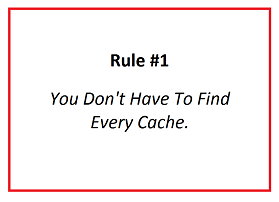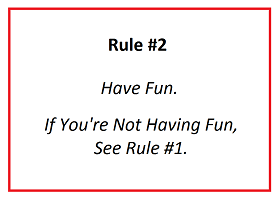Map Tricks
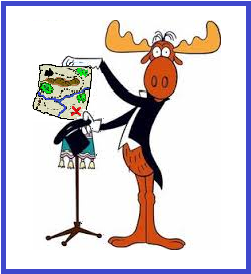 Hey, Rocky! Watch me pull a geocache outta' my hat! ... Nothin' up my sleeve...
Hey, Rocky! Watch me pull a geocache outta' my hat! ... Nothin' up my sleeve...
Well, no map tricks, really. Just some map tips. But I couldn't find an illustration I liked for map tips. This cache will cover some ways to use maps to help solve puzzles and to plan your visit to the cache. It will also cover working with some of the different coordinate checkers available.
These might seem to be unrelated subjects, but there are times on some puzzles when I work with them together.
Sometimes you can get close to a solution, but be uncertain about a number or 2 (or 3 or 4 or more). It can be tempting sometimes to "work the checker" by running all your possible solutions through it until you get one that works.

All the checkers discourage overusing this technique; some more than others. Some checkers will allow only one check every 10 minutes, and some allow 10 checks within a few minutes, before they give you a 10 minute time out. The length of the time-out can increase if you keep working the checker.
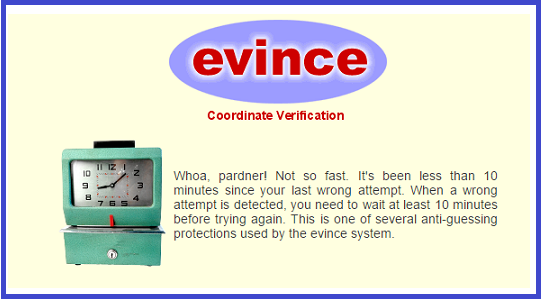
You can forestall some of this by pre-checking your solution.
First, try checking to see if your solution is too close to an existing cache. Geocaching guidelines state that caches must be at least a tenth of a mile (0.1 mile or 528 feet) from any other cache. One way to check for this is to click on the Corrected Coordinates link on the cache page.
Note: You can zoom into these images by pressing CTRL + (hold down the CTRL key and repeatedly press the plus key). You can zoom out by pressing CTRL - (CTRL minus), and return to normal view by pressing CTRL 0 (CTRL zero). You can also get a bigger image by clicking on the image links at the bottom of the description.

If any geocache is closer than 0.1 mile (528'), then your solution is almost definitely wrong. It's extremely rare for a cache to be published that's within 0.1 mile of another, but mistakes happen.

If the nearest cache is 0.1 mile or further away, you're not in the clear yet. This won't tell you if you're too close to the final of a multi cache or another puzzle cache.
If your solution is far enough away from known caches, click on the map links to see how it looks on different maps. Be curious - click on all links to see how the different maps appear. Some show satellite views, some show trails, some show contoured terrain. The ones I especially like are Google Maps and Open Street Map (which sometimes shows trails that aren't on Google Maps).
Look on the maps to see if your solution fits the cache's description and terrain rating. For example, you can probably rule out solutions that put you in the middle of a river or on a private home's rooftop. If your solution is on a forested hill and the terrain rating is 1.5, it might be wrong.
You can read through past logs to get hints. If your solution is on the side of a road but people mention having to balance on logs to cross a creek, your solution might be wrong.
Also take a look at bookmark lists on the cache page. If the cache is on bookmark lists for guard rails, lamp posts, or cemeteries, and you solution doesn't fall near any of those spots, it again is probably wrong.
With Google Maps you can choose between a street map view or a satellite view. You can zoom in to see details (such as lamp posts in a parking lot or guard rails along a street). I love to use it to check ahead of time for possible parking areas and trailheads.
Google Maps Street View

Google Maps Satellite View
This is a satellite view of the same location as above.
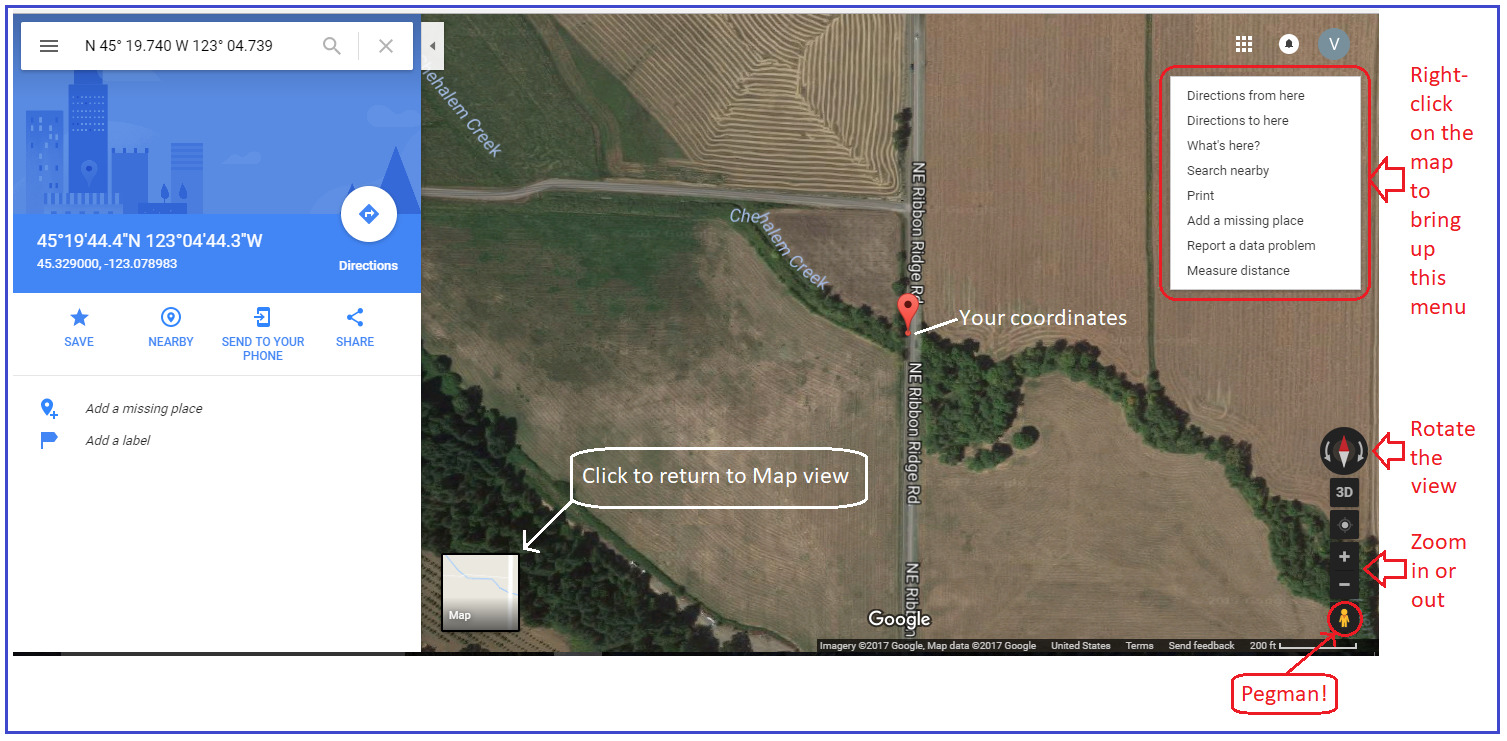
Pegman is very helpful!
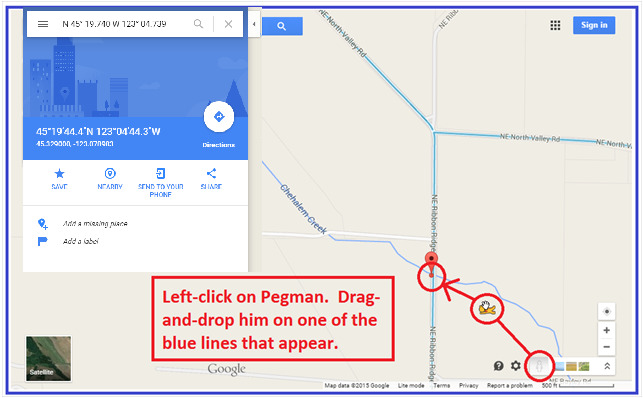
Google Maps Street View courtesy of Pegman
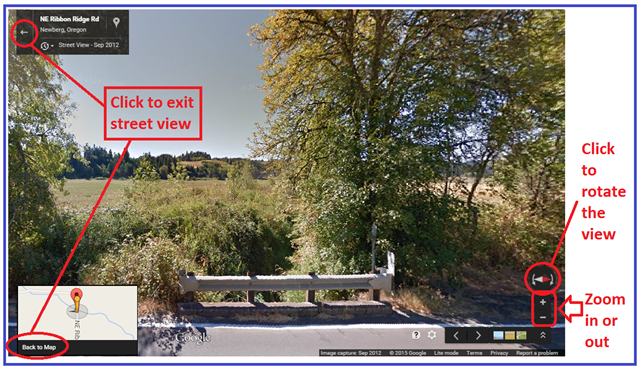
Some Forest Park trails courtesy of Open Street Map
Sometimes Open Street Maps shows trails that aren't visible on Google Maps.
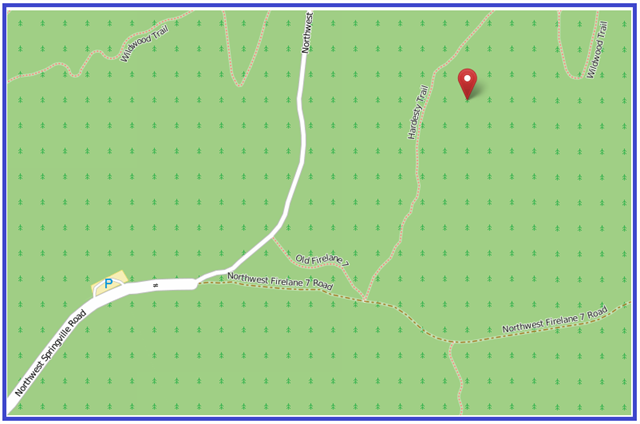
Cooper Mountain courtesy of My Topo Maps
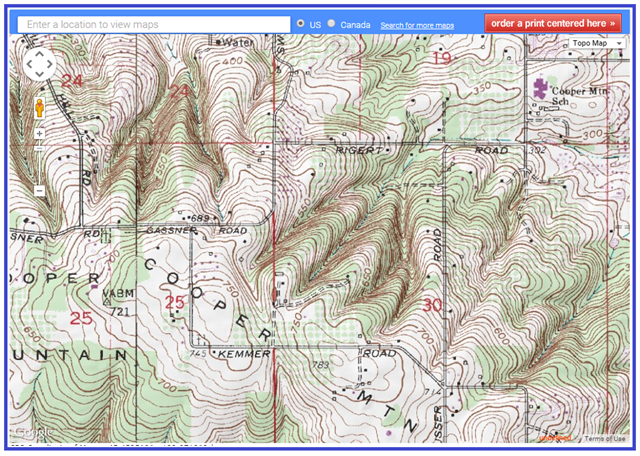
If you want info on how to read topographical maps, you can do an internet search for how read topo map. Here are two sites I found that way:
This explanation: How to Read a Topographic Map, and this video: How To Read A Map & Contour Lines
You can use some of these same techniques at this link: GPS Coordinate Converter, Maps and Info
which you learned about in How Do I Solve These #@&% Puzzles?!! Coord Formats
Google Earth is an even more powerful mapping program. You'll first need to download it. (Do an internet search for google earth.) If you use Geocaching Swiss Army Knife (GSAK) you can use Google Earth through a macro called GoogleEarth.
Note: It's not my intent to make you a Google Earth expert. I only know a few of the MANY Google Earth tips and tricks. Be curious - click around on different things and see what happens. You can also click the Help tab at the top left of the Google Earth page.
Also Note: It's also not my intent to provide a GSAK tutorial in this series. If you want to learn more about it, check these out:
- GEOregon, a local group of cachers that hold monthly meet-and-greets (a great place to meet fellow enthusiasts and get questions answered) and occasional classes. Check their event caches to see when the next one is coming up.
- PDX GSAK Facebook group, another local group, on Facebook, for GSAK help.
- GSAK Forums, where you can go right to the source.
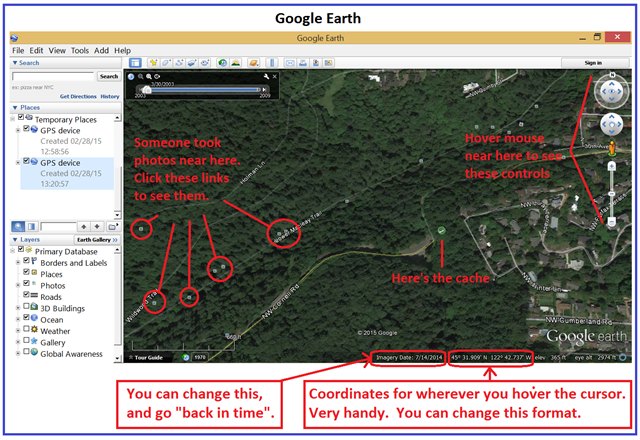

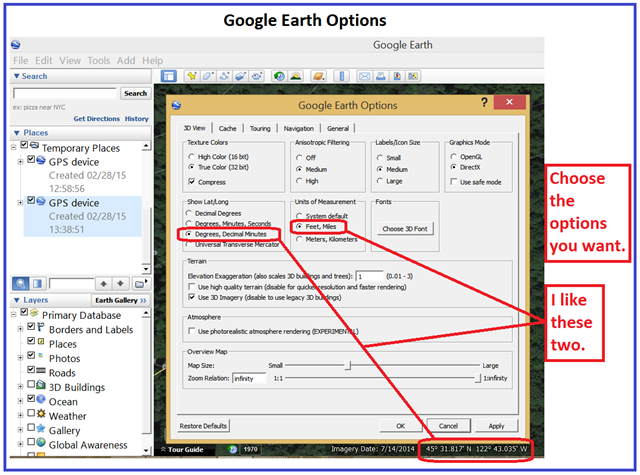
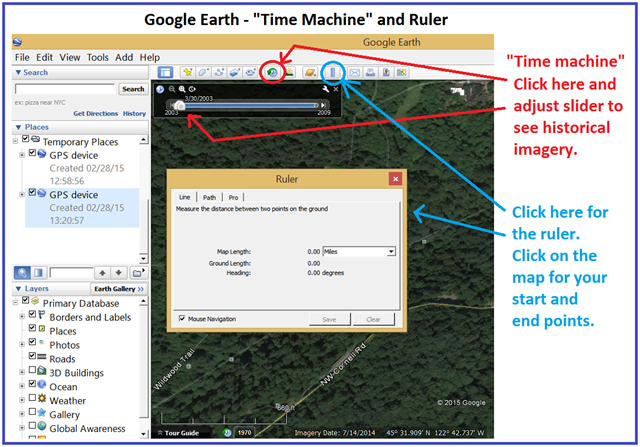
Note: You can use Pegman on Google Earth the same way as on Google Maps.
Now back to coordinate checkers.
Don't be reluctant to test a solution on a checker, even if you think it's wrong. After all, the checker is free to use, and you just might be surprised by what a checker will accept. With some, you don't need exact solutions, and with others you don't even need numbers.
Checksums: Not all puzzles have checkers. Some might have a checksum. With a checksum, you add the digits together into one number. You may have a checksum for the north and west coordinates separately, or for all the numbers together.
Here's an example using the posted coordinates for this cache: N 45° 36.612 W 122° 58.953
North coordinates are N 45° 36.612, so add 4+5+3+6+6+1+2=27; north checksum is 27.
West coordinates are W 122° 58.953, so add 1+2+2+5+8+9+5+3=35; west checksum is 35.
For the checksum for the total coords, add ALL the digits together. Checksum for the all the coordinates is 62.
While I'm thinking of it, I'll mention digital roots. I've seen puzzles based on digital roots. To get the digital root, keep adding the digits together until you get only one digit. So for the digital root of the north coordinates, add all the digits together to get 27 (the checksum). Then add 2+7=9. The digital root of the north coordinates is 9.
For the digital root of the west coordinates, add all the digits to get 35. Then add 3+5=8. The digital root of the north coordinates is 8.
For the digital root of the whole coordinates, add all the digits together to get 62. Add 6+2=8. The digital root of the whole coordinates is 8.
Finally: How do you know if your solution is correct if there's no checker or checksum? Sometimes you don't. When I started caching, checkers were rare and the uncertainty of knowing if your solution was correct added to the thrill (or frustration) of a puzzle cache hunt. Use the map tips above to make sure your solution is reasonable - not too near an existing cache, not in the middle of a highway, consistent with the terrain and hints, and not under water. Then go out and look for it.
Now, finally, the puzzle:
This is a two-part puzzle to familiarize you with two common coordinate checkers. You must use each one in turn to get the final solution.
Puzzle Part 1: Pick a one digit number from 0 to 9 (any one - your choice, and it really doesn't matter which one you choose) and call it X. Add it to the posted coordinates to this cache:

Input your solution here:

Puzzle Part 2 was provided in the checker for Part 1. Input your answer here:

You can validate your puzzle solution with certitude.
Remember, you don't always need numbers for a checker. How do you know? If it's not obvious from the puzzle, click on the checker and see what it asks for.
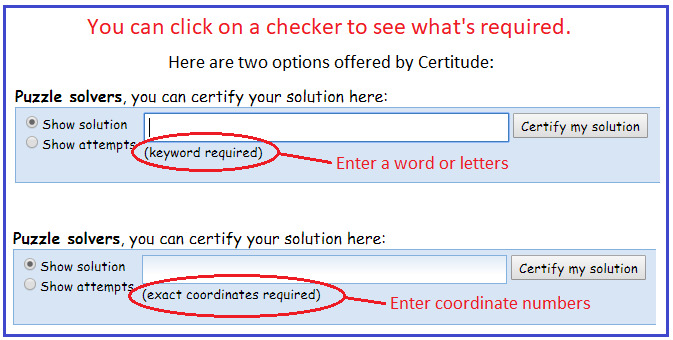
As I said, this is one of a series of "How Do I Solve..." caches. They are spread out in different neighborhoods. It might help to solve them in order, but you don't need to. I tried to make these easy to understand, but if you have any questions about them, please ask.
Here are all the caches in the series. They are also posted in a "How Do I Solve These #@&%$ Puzzle Caches?!!" bookmark list.
This series of #@&%$ Puzzles contains the following caches:
Have fun solving puzzle caches! And remember ...
